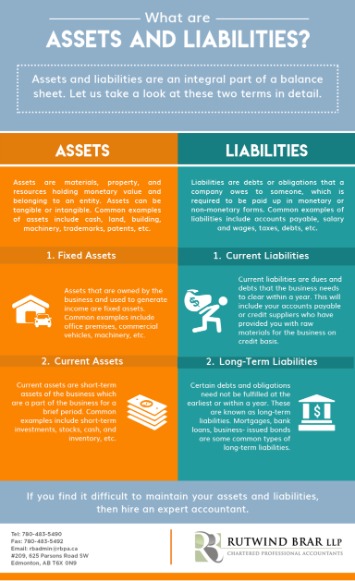
Checks that have been written and sent out but have yet to clear through the banking system. These deductions would be reflected in the book balance while not yet reflected in the bank account balance. As a result, a company’s book balance would be lower than the bank balance until the checks have been deposited by the payee into their bank and presented to the payor’s bank for payment to the payee. For example, if a company wrote out several checks, those amounts would be reflected in the book balance, and at the end of the accounting period, they would be reconciled with the cash balance in the bank account.
The adjusted bank balance amount is calculated by taking the amount entered in the Statement Ending Balance field in Reconcile Bank, adding all deposits in transit, subtracting or adding all adjustments, and subtracting all outstanding checks.
The book balance is the in-house general ledger record of the same account. Discover the bank reconciliation definition and the purpose of bank reconciliation. Learn how professionals prepare a bank reconciliation statement, with examples.
The term is also used to refer to the balance that is present in an account on the last day of the current banking period, or the end of the business month. From this perspective, the book balance can be viewed as the starting point for reconciling the account records held by the bank and the records maintained by the account Book Balance Definition holder. The company may sometimes record a deposit incorrectly, or it may deposit a check for which there are not sufficient funds (NSF). If so, and the bank spots the error, the company must adjust its book balance to correct the error. The bank may also charge an NSF fee, which must be recorded in the company’s books.
When it comes to pending deposits, it is usually not a good idea to add that amount to the book balance in order to determine how much of the account balance can be withdrawn or otherwise used. Many banks have a policy of not applying the deposit to the account until the funds clear from the issuing bank. Depending on the nature of the deposit, this float period may take up to three business days.
Knowing the book balance as of a specific date is important for several reasons. First, it makes it possible to reconcile the records of the bank with the records of the account holder. For businesses that must pay taxes on the outstanding balances within their cash accounts, knowing how much cash is actually present as of a certain day makes it much easier to calculate those taxes. In any situation, the book balance as of a specific date serves as a starting point to determine where discrepancies have occurred since, and make it possible to correct those accounting issues. Also known as a gross balance, a book balance consists of the amount of funds that are on deposit in an account prior to making any type of adjustment to that balance.

The bank balance is the balance reported by the bank on a firm’s bank account at the end of the month. Ensuring an accurate book balance can help companies manage the monthly cash flow activities, which includes cash coming in and cash being paid out from the company. As a result, the interest earned would not be reflected in the book balance until the interest has been credited and the bank account reconciliation has been performed. Book balance indicates the balance of the ledger accounts which has been prepared by the companies for representing the balance of the bank account…. Accounting helps in maintaining a chronological and formal record of all the operating transactions of the company or an institute. It includes various processes and methods which would help in representing the correct and actual figures to the creditors or stockholders of a company.
Since the book balance is the gross balance of funds in the account before any checks are cleared or deposits posted, the figure may or may not accurately reflect how much money the account holder has to work with. In order to arrive at that figure, it is necessary to deduct any outstanding checks or other debits from that balance. Sometimes referred to as a net balance, this figure represents what is left after pending debits have cleared. By allowing for those pending debits, the account holder minimizes the risk of overdrawing the account, incurring penalties, and possibly having a check returned.

Finally, the company or the bank may have erroneously recorded a transaction, which results in an unresolved difference between the two balances. Also, a deposit could be recorded incorrectly in a company’s book balance resulting in the amount received by the bank not matching the company’s accounting records. Also, sometimes the bank can make an error and record a transaction incorrectly, leading to an inaccurate bank balance. From time to time, there are errors and adjustments that need to be made to bank transactions that would lead to discrepancies between the book balance and bank balance. If a check included in a deposit had insufficient funds, the bank would withdraw that money out of the company’s checking account.
Interest earned on an account is often paid on a company’s cash balance and is credited to the bank account at the end of the month. The interest could be from a savings account or a cash sweep, which is when the bank withdraws unused funds in a company’s checking account and invests that money in short-term investments. Bank account service charges might have been https://kelleysbookkeeping.com/how-does-a-limited-liability-company-llc-pay-taxes/ deducted from a company’s bank account throughout and at the end of the month. Those debits would not be recorded in the book balance until the month-end numbers are reconciled with the bank. A bank reconciliation statement can be prepared to summarize the banking activity for an accounting period to be compared to a company’s financial records and book balance.
In other words, the book balance represents a running tally of a company’s account balance when considering all transactions, some of which have yet to be reconciled through the bank account. The term book balance, which is also used in the bank reconciliation is the amount shown in the company’s general ledger for the bank account. Service charges are charged by the bank for its services in maintaining the checking account, and must be subtracted from the company’s book balance. The amount of interest earned is recorded in the bank statement, and must be added to the company’s book balance. The month-end bank statement would not reflect the debit if Company XYZ did not deposit it before the end of May.
After many years in the teleconferencing industry, Michael decided to embrace his passion for
trivia, research, and writing by becoming a full-time freelance writer. Malcolm’s other interests include collecting vinyl records, minor
league baseball, and cycling. Harold Averkamp (CPA, MBA) has worked as a university accounting instructor, accountant, and consultant for more than 25 years.
(For an individual, the book balance is likely to be the balance appearing in the person’s check register.) It is common for the book balance to not agree with the balance on the bank statement as of the same day. This is the case when there are bank fees or electronic transfers on the bank statement that have not yet been recorded in the company’s general ledger accounts. For example, the bank statement may reveal that a bank service charge was withdrawn from the account on the last day of the month. There are multiple differences between the bank balance and book balance. First, there are likely to be checks outstanding that were recorded in the company’s book balance, but which have not yet been presented to the bank, and so are not recorded in the bank balance. Second, the company may have incorporated a deposit in transit into its book balance, but the bank has not yet processed it, so it does not appear in the bank balance.
Typically, book balance is used to manage the cash within a company’s checking account. At the end of an accounting period, the book balance is reconciled with the bank statement to determine if the cash in the bank account matches the book balance. The bank balance is a company’s cash position in a company’s bank account as reported at the end of the month, according to the bank statement. When debits and credits are processed through the bank account, those amounts are reflected in the bank account’s cash balance. However, there are several scenarios when the book balance can differ from a company’s bank balance. The balance on June 30 in the company’s general ledger account entitled Checking Account is the book balance that pertains to the bank account being reconciled.
